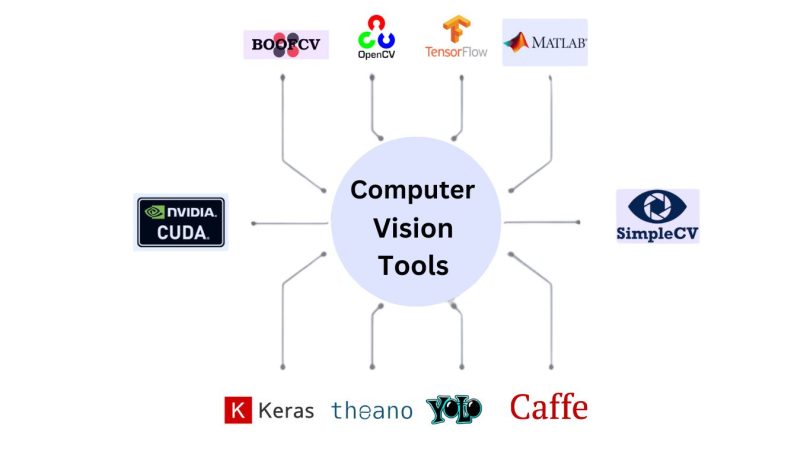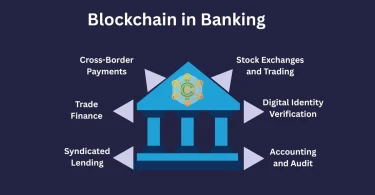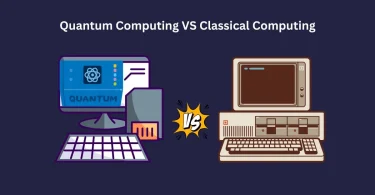Computer Vision technology has witnessed a significant development in the past few years, being identified as a powerful technology in the areas of “security”, “healthcare”, “agriculture”, “smart city infrastructure”, “industrial manufacturing” and “automotive industries”.
Confronted with a wide range of tools, platforms, frameworks and software libraries is a problem in the sense that one has to select a tool for a particular computer vision task from the plethora of available ones.
This article specifically is centered on examining the most popular computer vision tools, their purposes and intends to help people to make a correct decision for the most suitable tool for their projects.
Top Computer Vision Tools:
BoofCV:
It is an open-source library written for real-time computer vision. This library offers a rich and varied set of functionalities, covering all the basic image processing capabilities like low-level image processing, structure from motion, recognition, fiducial detection, feature detection and tracking.
OpenCV:
As a tool for computer vision, OpenCV is widely considered a gold standard object detection that can boost the accuracy of computer vision systems. It is undoubtedly among the most used open-source libraries when it comes to computer vision and image processing.
Furthermore, it supports working in many programming languages, Java and C++ included, which makes it all-round and suitable e.g. landmark detection, face detection or object tracking.
Tensorflow:
TensorFlow proves itself one of the main challengers to OpenCV, which is commonly associated with goggles, this guarantees stability and user-friendly use. TensorFlow can be used as a free resource, which is mainly involved in deep learning applications while traditional machine learning methods are also supported via it. As well, TensorFlow’s training modules strengthen TensorFlow and allow it to become the top choice for computer vision tasks. OpenCV is still a good option for processing images, though TensorFlow acquires the advantage in the area of training.
Matlab:
One of the most elite computer vision applications that can be employed because it is an interactive desktop environment and possesses programming ability. The combination of these attributes makes Matlab perfect for script development and code integration, enabling it to be an appropriate tool for researching video data and images as well.
Matlab is used to create algorithms and further the exploration of data, thus allowing users to come up with efficient vision solutions and simplify workflow by taking advantage of standard and reference models.
CUDA:
CUDA comes to the fore as a star on the rise, attracting attention for its speeding up capabilities of neural network training and deep learning algorithms, especially when the latter is paired with GPU devices.
Through its concerted initiatives granting hardware solutions to CUDA, NVIDIA can contribute to the increased speed of development in computer vision applications.
Among its most indispensable features, CUDA’s scattered read operations enable one to run code from arbitrary memory addresses effortlessly, which is yet another testimony to its remarkable capabilities.
SimpleCV:
This is an open-source framework that enables the developers to build computer vision apps and with the support of high-powered computer vision libraries such as OpenCV, the developers can have access to various libraries. Most importantly, SimpleCV makes it possible to integrate libraries flawlessly by providing access to them within the framework. This eliminates the need for experts in areas like color spaces and buffering. While Python is used for scripting, SimpleCV makes it a simple programming task for computer vision application development.
Keras:
The Keras API is human-oriented and intended for users who are humans and not for machines. It is aimed to facilitate the usage and minimize human cognitive load. The standardization of Keras is done by bringing in the best practices. This ensures consistency in common use cases and also provides clear feedback for user errors.
CUDA and GPU acceleration in Keras allows it to perform complex computations faster, thereby, it is more preferred among the users. Keras is well documented is the other factor that makes it one of the most powerful tools used by the industry.
Theano:
A multifunctional tool that is capable of running on both CPU and GPU architectures. In contrast to more renowned frameworks including TensorFlow, Theano is praised for its speed and versatile operations amongst other features. The Theano outperforms TensorFlow in some aspects, such as using one-GPU task performance and more sophisticated optimizers, making it one of the most noteworthy options in this field.
YOLO:
Although YOLO, which is “You Only Look Once,” is fairly new, it still provides prominence among real-time object detection algorithms because of its neural network architecture that permits rapid processing.
Deep learning algorithms such as Fast-RCNN, Single-Shot-Multi-Box-Detector (SSD) and Retina-Net are used in the design of YOLO. The algorithm performs object detection faster than any other algorithm, and with greater accuracy than traditional algorithms, therefore, YOLO is a good choice for a single run of object detection task.
CAFFE:
CAFFE is a deep-learning library that is very popular for its fast processing and modulatory capability. It is a configurable tool that can be used for various academic initiatives such as research, prototyping start-up projects and even advancing to develop products with vision, multimedia, and speech abilities.
In addition to other tasks, those mentioned are among the most powerful tools used in the field of computer vision. Additionally, we need to take into account the changing environment where computer vision and object detection technologies are being endlessly improved with the creation of new applications.
Among all the items showcased, OpenCV is unique. However, several other programs perform with notable success, but none has as much ability as OpenCV. The same, however, TensorFlow is a perfect option for those who are going to start exploring of computer vision.
Final Thoughts:
Computer vision’s future is full of possibilities. With the ripeness of the technology and the new devices being added to the collection, we can expect to see more innovative applications which in turn will help in making our lives better and will change the face of many industries. Through the reading of this article, you now have a basic knowledge of some of the tools that are currently the most efficient. Consequently, in overcoming the challenges, you have to get in, discover, and be a part of the process of how machines perceive the environment.




Leave a Comment